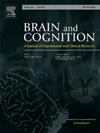Dynamic amplitude of low-frequency fluctuation links dark personalities to malevolent creative behavior
IF 1.4
3区 心理学
Q3 NEUROSCIENCES
引用次数: 0
Abstract
Malevolent creativity refers to the ability to generate ideas that cause harm to oneself or others. While previous research has touched on how personality traits influence malevolent creative behavior, the neural mechanisms involved remain underexplored. This study investigated the brain patterns associated with malevolent creative behavior and how these patterns are mediated by dark personality traits (Machiavellianism, narcissism, and psychopathy) and positive traits (internalization, symbolization, and honesty-humility). Our findings revealed that Machiavellianism mediated the relationship between the amplitude of low-frequency fluctuation (ALFF) in the left medial superior frontal gyrus (mSFG), pallidum (PAL), and middle temporal gyrus (MTG) and malevolent creative behavior, particularly in actions like hurting people or playing tricks. Psychopathy similarly mediated the link between the ALFF in the right orbital middle frontal gyrus (oMFG), right mSFG, left PAL, and left MTG and malevolent creative behavior. Additionally, Machiavellianism negatively mediated the relationship between the fractional ALFF (fALFF) of the left parahippocampal gyrus (PHG) and hurting people, as well as between the fALFF of the left inferior occipital gyrus (IOG) and playing tricks. The ALFF in the left mSFG and left MTG predicted playing tricks but also negatively predicted internalization and honesty-humility, which in turn reduced engagement in playing tricks. Finally, the fALFF of the left IOG negatively predicted playing tricks and positively predicted internalization, which again decreased playing tricks. These findings highlight the complex interaction between brain activity, personality traits, and malevolent creative behavior, offering a potential path for targeted interventions and further research into this interesting phenomenon.
低频波动的动态振幅将黑暗人格与恶意的创造性行为联系起来。
恶意创造力指的是产生对自己或他人造成伤害的想法的能力。虽然之前的研究已经触及了人格特质如何影响恶意的创造性行为,但涉及的神经机制仍未得到充分探索。本研究调查了与恶意创造性行为相关的大脑模式,以及这些模式是如何被黑暗人格特征(马基雅维利主义、自恋和精神病)和积极人格特征(内化、象征化和诚实-谦卑)所调节的。我们的研究结果表明,马基雅维利主义介导了左内侧额上回(mSFG)、白球(PAL)和中颞回(MTG)低频波动幅度(ALFF)与恶意创造性行为之间的关系,特别是在伤害他人或恶作剧等行为中。精神病态同样介导了右眶额中回(oMFG)、右眶额中回、左PAL和左MTG与恶意创造行为之间的联系。此外,马基雅维利主义负向介导了左侧海马旁回(PHG)分数ALFF (fALFF)与伤害他人、左侧枕下回(IOG)分数ALFF与恶作剧之间的关系。左mSFG和左MTG的ALFF预测玩把戏,但也负向预测内化和诚实-谦卑,这反过来减少了玩把戏的参与。最后,左IOG的fALFF负向预测玩把戏,正向预测内化,这再次减少了玩把戏。这些发现强调了大脑活动、人格特征和恶意创造行为之间复杂的相互作用,为有针对性的干预和进一步研究这一有趣现象提供了潜在的途径。
本文章由计算机程序翻译,如有差异,请以英文原文为准。
求助全文
约1分钟内获得全文
求助全文
来源期刊

Brain and Cognition
医学-神经科学
CiteScore
4.60
自引率
0.00%
发文量
46
审稿时长
6 months
期刊介绍:
Brain and Cognition is a forum for the integration of the neurosciences and cognitive sciences. B&C publishes peer-reviewed research articles, theoretical papers, case histories that address important theoretical issues, and historical articles into the interaction between cognitive function and brain processes. The focus is on rigorous studies of an empirical or theoretical nature and which make an original contribution to our knowledge about the involvement of the nervous system in cognition. Coverage includes, but is not limited to memory, learning, emotion, perception, movement, music or praxis in relationship to brain structure or function. Published articles will typically address issues relating some aspect of cognitive function to its neurological substrates with clear theoretical import, formulating new hypotheses or refuting previously established hypotheses. Clinical papers are welcome if they raise issues of theoretical importance or concern and shed light on the interaction between brain function and cognitive function. We welcome review articles that clearly contribute a new perspective or integration, beyond summarizing the literature in the field; authors of review articles should make explicit where the contribution lies. We also welcome proposals for special issues on aspects of the relation between cognition and the structure and function of the nervous system. Such proposals can be made directly to the Editor-in-Chief from individuals interested in being guest editors for such collections.
 求助内容:
求助内容: 应助结果提醒方式:
应助结果提醒方式:


